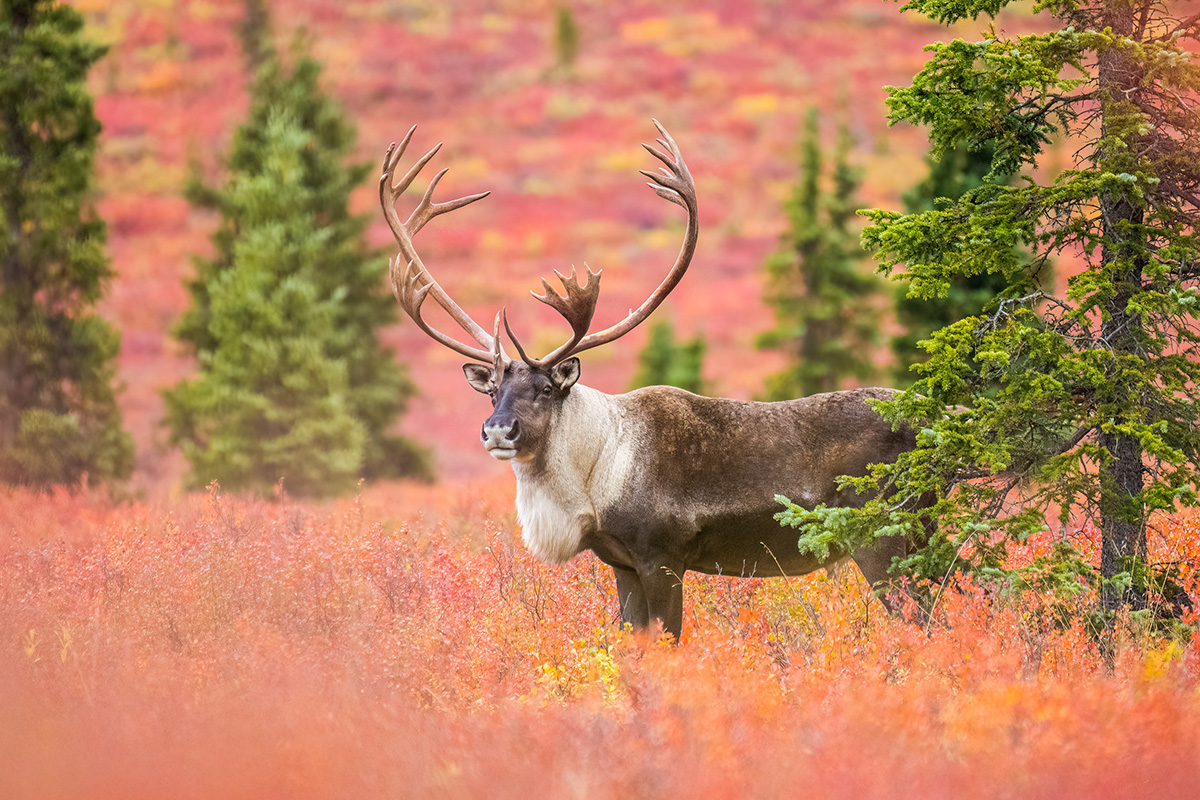Taming the Wild
With her Tamron 150-500mm VC telephoto lens, Alyce Bender offers up-close views of both the local and exotic.
Share the article:
More Photo Tips | Video Gallery | Photo Gallery | Enewsletter sign-up
By Jenn Gidman
Images by Alyce Bender
Whether she’s tracking wild stallions in Utah or observing tropical aracari in the Costa Rican jungle, Alyce Bender is always on the lookout for the perfect wildlife photo. You don’t have to travel far from home, however, to find those opportunities yourself. “There’s so much you can find in your own backyard or neighborhood park if you poke around,” says the San Antonio–based photographer (she’ll soon be moving back to Las Vegas). “I’m passionate about biodiversity and vulnerable species, and I enjoy seeking out more unusual animals, but I’m just as happy taking a portrait of the local creatures where I live.”
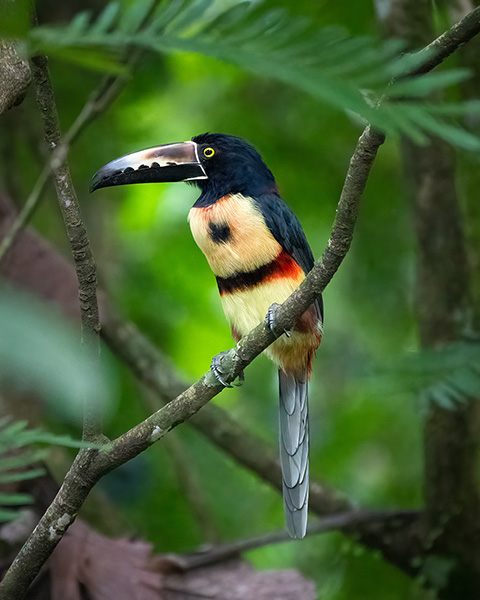
150-500mm (500mm), F7.1, 1/800 sec., ISO 10000
Click image to view larger
Paired with Bender's Sony mirrorless camera for her wildlife work is the Tamron 150-500mm Di III VC VXD ultra-telephoto lens. “With that long barrel length and remarkable sharpness, as well as the Vibration Compensation feature that keeps shakiness at bay, this lens is amazing,” she says. “Plus, when I’m shooting in the Sony ‘super 35’ crop mode, that 500mm effectively turns into the equivalent of 750mm. The lens is compact and light, which is useful when I’m traveling on a small prop plane with weight limits. Plus, the 150-500mm is ruggedly built, with moisture-resistant construction that allows me to carry it deep into the rainforest without worrying about water seepage.”
BENDER'S QUICK TIPS FOR TAKING ANIMAL PHOTOGRAPHY
Nail down the logistics.
If you're photographing wildlife on a guided tour or using a national park’s transportation system, know the schedule. In Denali National Park, for instance, there are transit buses that circle through the park. You can hop off when you want to take pictures, then catch another one further into the park or back to the entrance. However, you don’t want to miss the last one back. Figure out your plan beforehand so you can take wildlife photos worry-free.
Create separation between your subject and background.
This is especially true for birds in busy-looking environments where you can’t control the background. For my photo of a small Bewick’s wren in Texas, I love the separation I was able to achieve by using a relatively shallower depth-of-field, which in this case was F7.1. I was still able to maintain sharp focus on the details of the bird while softly blurring the fairly cluttered background.
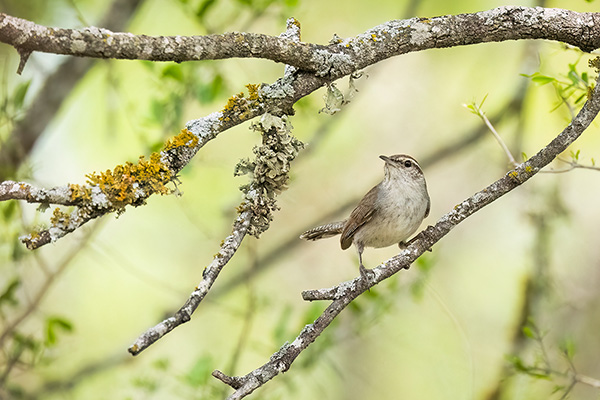
150-500mm (355mm), F8, 1/4000 sec., ISO 6400
Click image to view larger
Position yourself as close to the animal’s eye level as possible for taking wildlife photos.
This is an animal photography essential that helps you create a more intimate, engaging perspective, which in turn allows viewers to forge a stronger connection with your subjects. By getting lower than eye level, you can even blur out some foreground elements in the frame by using that shallower depth-of-field I mentioned earlier. You can see that in my photo of the caribou in Denali National Park—by shooting at F7.1, the bushes in the foreground add further depth and dimension to the image.
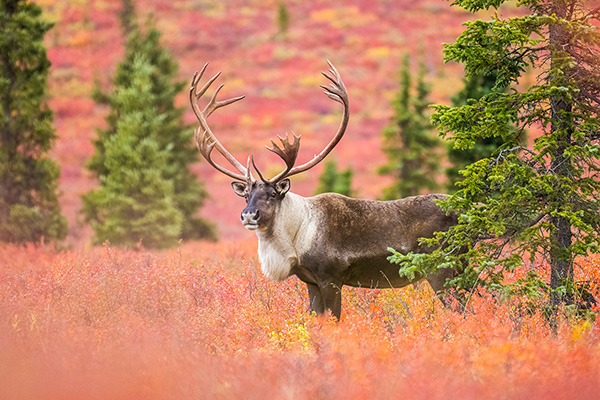
150-500mm (500mm), F7.1, 1/500 sec., ISO 4000
Click image to view larger
Put plenty of space between yourself and your subjects.
Give the animals ample breathing room, for your safety and theirs. When I was taking pictures of the wild horses of the Onaqui herd in Utah, just south of Salt Lake City, the directive was to stay 100 feet away—but I’ve worked horses my entire life, and I can tell you that 100 feet isn’t enough. They wouldn’t intentionally hurt people, but if they’re running around and you happen to get swept up in that, they might not notice. That’s where a lens like the 150-500mm comes in very handy for wildlife photos. When this stallion came trotting over, I was able to stay even further back than the recommended distance for animal photography by zooming in.
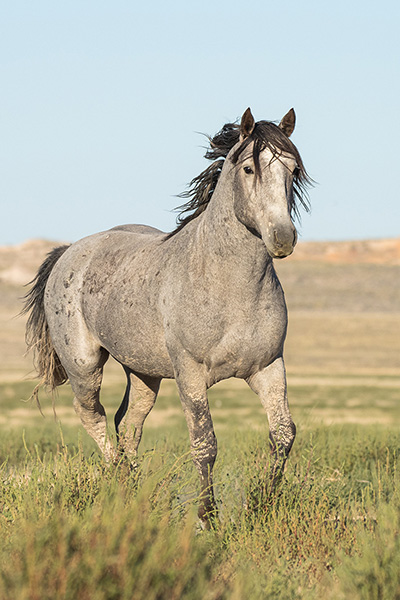
150-500mm (237mm), F7.1, 1/1250 sec., ISO 400
Click image to view larger
Use a telephoto to tell the story you want to tell.
I know a number of wildlife photographers who swear by their prime lenses, but in my opinion, you can’t beat the versatility of a telephoto lens like the 150-500mm. For that photo of the stallion, for instance, I could’ve pulled back a little more, and you would’ve seen the rest of the herd for more context. I wanted to isolate this one horse, however, and make it appear as if he was out there alone in the wild.
The same for the limpkin I photographed in Florida. They’re these almost prehistoric-looking birds with a haunting call—because I grew up there, it’s a call I’m well familiar with. I took this picture in a popular wetlands area with lots of trails, and this particular limpkin was standing on the wooden rail of the boardwalk. I didn’t want that man-made structure in my photo, though, so I zoomed all the way in to 500mm. With the bokeh of the reeds behind it, it looks like a much more remote environment.
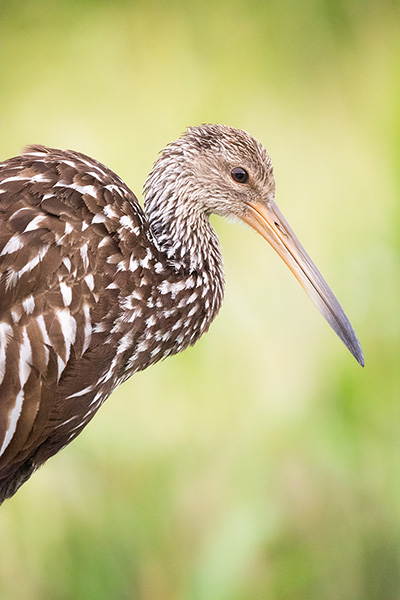
150-500mm (500mm), F6.7, 1/1000 sec., ISO 12800
Click image to view larger
To see more of Alyce Bender’s work, check out her website and Instagram.
Is your Tamron News subscription up to date? Click to subscribe to all editions of Tamron News featuring how-to tips, new product news, contest announcements and inspiration!
More Photo Tips | Watch Videos | Learn More About Tamron Lenses | Photo Gallery
